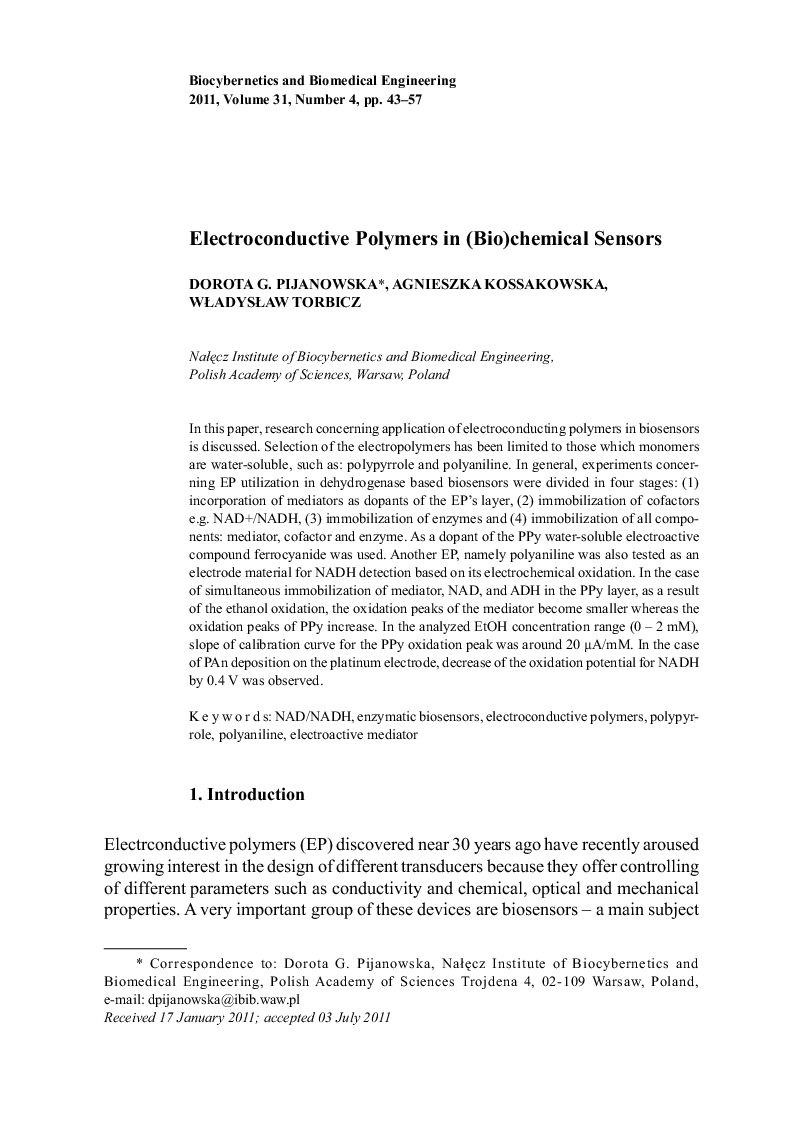| Article ID | Journal | Published Year | Pages | File Type |
|---|---|---|---|---|
| 5295 | Biocybernetics and Biomedical Engineering | 2011 | 15 Pages |
In this paper, research concerning application of electroconducting polymers in biosensors is discussed. Selection of the electropolymers has been limited to those which monomers are water-soluble, such as: polypyrrole and polyaniline. In general, experiments concerning EP utilization in dehydrogenase based biosensors were divided in four stages: (1) incorporation of mediators as dopants of the EP’s layer, (2) immobilization of cofactors e.g. NAD+/NADH, (3) immobilization of enzymes and (4) immobilization of all components: mediator, cofactor and enzyme. As a dopant of the PPy water-soluble electroactive compound ferrocyanide was used. Another EP, namely polyaniline was also tested as an electrode material for NADH detection based on its electrochemical oxidation. In the case of simultaneous immobilization of mediator, NAD, and ADH in the PPy layer, as a result of the ethanol oxidation, the oxidation peaks of the mediator become smaller whereas the oxidation peaks of PPy increase. In the analyzed EtOH concentration range (0 – 2 mM), slope of calibration curve for the PPy oxidation peak was around 20 µA/mM. In the case of PAn deposition on the platinum electrode, decrease of the oxidation potential for NADH by 0.4 V was observed.
